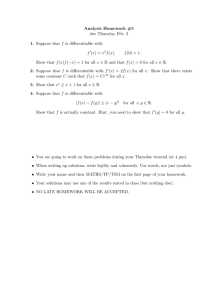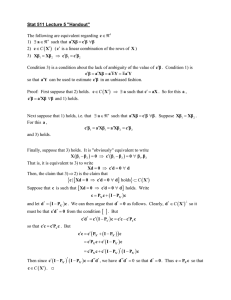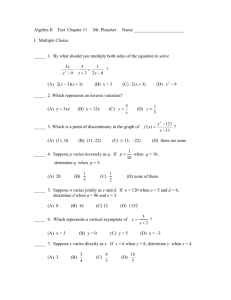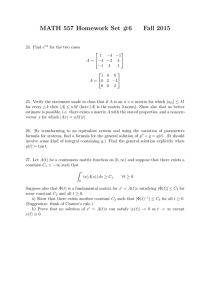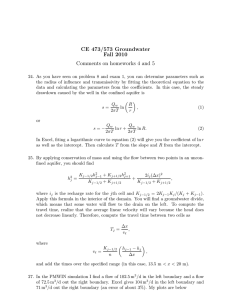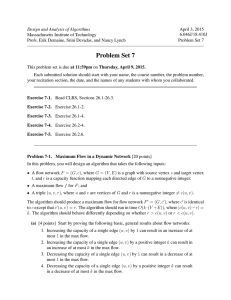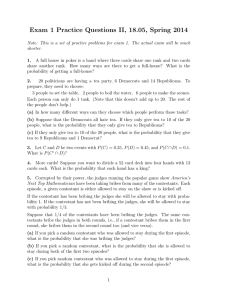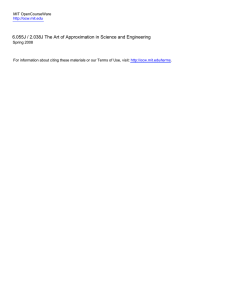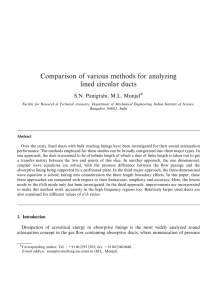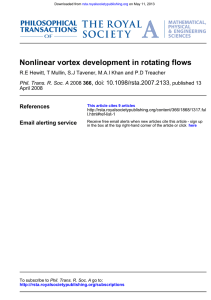Mathematics 103 — Section 202 — Spring 2001
advertisement
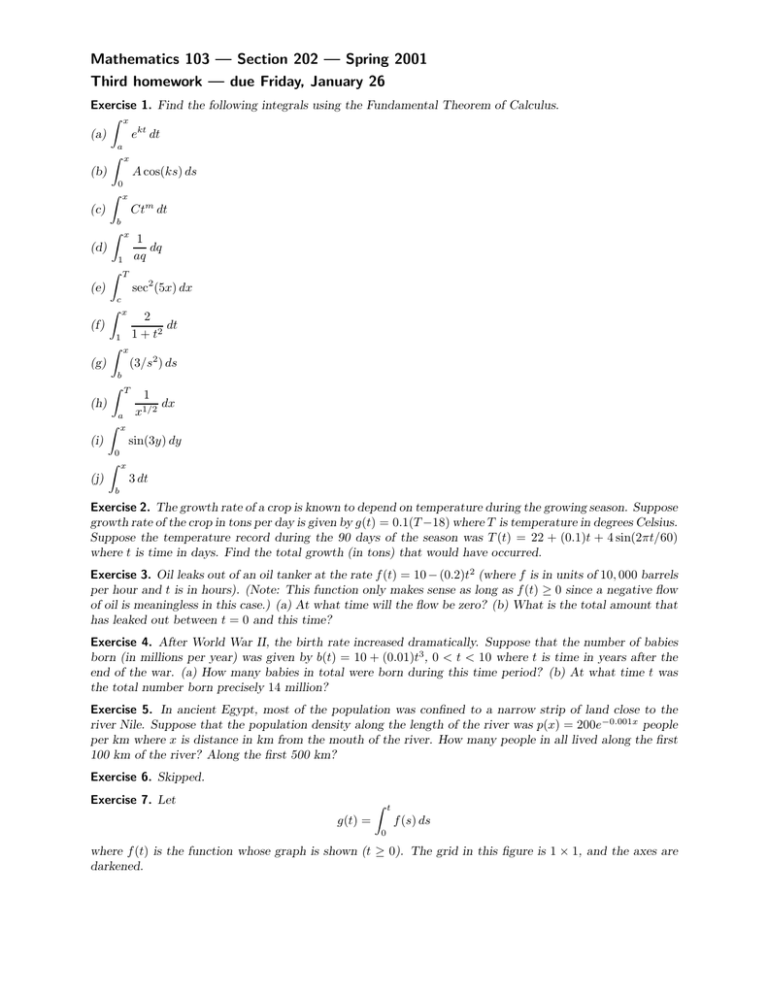
Mathematics 103 — Section 202 — Spring 2001 Third homework — due Friday, January 26 Exercise 1. Find the following integrals using the Fundamental Theorem of Calculus. x (a) ekt dt a x A cos(ks) ds (b) 0 x Ctm dt (c) b x 1 dq aq (d) 1 T sec2 (5x) dx (e) c x 2 dt 1 + t2 (f) 1 x (g) b T (h) a x (i) 0 (j) b (3/s2 ) ds x 1 dx x1/2 sin(3y) dy 3 dt Exercise 2. The growth rate of a crop is known to depend on temperature during the growing season. Suppose growth rate of the crop in tons per day is given by g(t) = 0.1(T −18) where T is temperature in degrees Celsius. Suppose the temperature record during the 90 days of the season was T (t) = 22 + (0.1)t + 4 sin(2πt/60) where t is time in days. Find the total growth (in tons) that would have occurred. Exercise 3. Oil leaks out of an oil tanker at the rate f (t) = 10 − (0.2)t2 (where f is in units of 10, 000 barrels per hour and t is in hours). (Note: This function only makes sense as long as f (t) ≥ 0 since a negative flow of oil is meaningless in this case.) (a) At what time will the flow be zero? (b) What is the total amount that has leaked out between t = 0 and this time? Exercise 4. After World War II, the birth rate increased dramatically. Suppose that the number of babies born (in millions per year) was given by b(t) = 10 + (0.01)t3 , 0 < t < 10 where t is time in years after the end of the war. (a) How many babies in total were born during this time period? (b) At what time t was the total number born precisely 14 million? Exercise 5. In ancient Egypt, most of the population was confined to a narrow strip of land close to the river Nile. Suppose that the population density along the length of the river was p(x) = 200e−0.001x people per km where x is distance in km from the mouth of the river. How many people in all lived along the first 100 km of the river? Along the first 500 km? Exercise 6. Skipped. Exercise 7. Let g(t) = 0 t f (s) ds where f (t) is the function whose graph is shown (t ≥ 0). The grid in this figure is 1 × 1, and the axes are darkened. 2 Draw the graph of g(t) as accurately as you can. Exercise 8. An express mail truck delivers mail to various companies situated along a central avenue and often goes back and forth as new mail arrives. Over some period of time, 0 ≤ t ≤ 10, its velocity (in km per hour) can be described by the function v(t) = t2 − 9t + 14. Find: (a) The net distance (i.e. displacement) traveled over this period of time. [Hint: recall that if you leave home in the morning, travel to UBC, and then go back home, then your net distance traveled, or total displacement over this full period of time is zero.] (b) How much gasoline was consumed during this period of time if the vehicle uses 5 liters per km. [Hint: now you will need to find the total distance that the vehicle actually covered during its trip.] Exercise 9. The velocity of a boat moving through water is found to be v(t) = 10(1 − e−t ). (a) Find the acceleration of the boat and show that it satisfies a differential equation, i.e an equation of the form da(t)/dt = −ka(t) for some value of the constant k. What is that value of k? (b) Find the distance traveled by the boat by time t.
